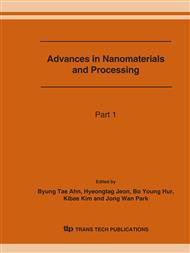p.1649
p.1653
p.1657
p.1661
p.1665
p.1669
p.1673
p.1677
p.1681
EXAFS Analyses on Local Structure of Gallium in Amorphous Selenide Optical Materials Doped with Rare Earths
Abstract:
Ga K-edge EXAFS spectra have been analyzed to elucidate the local coordination structure of Ga in two representative selenide Ge-As-Se and Ge-Sb-Se glasses all doped with Pr. Gallium turned out to be coordinated with 4 Se atoms in its first neighboring shell. This implies that Ga does not follow the 8-N rule associated with the short-range order structures of typical covalent glasses, further indicating there being more ionic-bond nature in the Ga-Se bonds compared to other heteropolar chemical bonds in the selenide glasses. This is decisive for the Pr3+ ions to be incorporated in the selenide glasses. In this case, the GaSe4 units can be electrically neutralized by the doped Pr3+ ions that act as a charge compensator. As such, inside the selenide glasses, distributions of Pr3+ ions and the Ga tetrahedral units are closely correlated. Spectroscopic properties of rare earths embedded in these Ga-containing selenide glasses thus can be explained in connection with the proposed role of Ga.
Info:
Periodical:
Pages:
1665-1668
Citation:
Online since:
June 2007
Authors:
Keywords:
Price:
Сopyright:
© 2007 Trans Tech Publications Ltd. All Rights Reserved
Share:
Citation:


